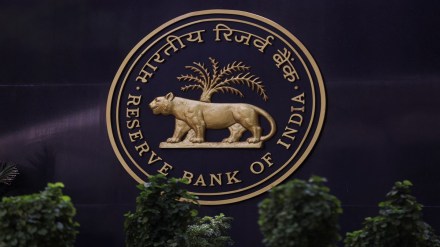– By Chinmay Joshi
The central banks across the world have started to adopt easy monetary policy in the wake of success in attainment of mandated inflation objectives. The US federal reserve on September 18, 2024 decided to reduce its benchmark policy interest rates by 50 basis points (bps). In the Indian context, too, there has been some success in curtailing the heightened inflationary pressure in the past couple of months where the price levels remained within the mandated target of the flexible inflation target (FIT) framework, i.e., 4% (+/-2%). Recently, there have been calls for reduction in monetary policy interest rates in order to achieve and sustain the higher level of economic growth. Against this backdrop, the monetary policy committee (MPC) of the Reserve Bank of India (RBI), which is the policy interest rate deciding authority in India, is scheduled to meet for the fourth time in the current fiscal on October 7-9, 2024, which requires pondering over whether price stability should take a backseat and enhancement of economic growth should be prioritised. However, it is important to keep in mind that several downside risks emerge for the headline inflation in India in terms of prolonging geo-political crises, erratic climatic conditions, increasing focus on restrictive trade practices around the world, and persistence of inflationary pressures led by food and services inflation, among others.
The recent economic growth projections have been conservative and less optimistic in the upcoming period. Both, the Economic Survey 2023-24 and the latest MPC resolution by the RBI predicted that the growth rate will moderate to 6.5-7.0% and 7.2% in 2024-25 respectively. The latest real GDP growth print of 6.7% in Q1 of 2024-25, estimated by the NSO, MOSPI, GoI also corroborate the declining trend projected by other official estimates. This will necessitate the government to adopt expansionary fiscal policies in order to revive the economic growth. Besides, adoption of additional fiscal policy support schemes such as ‘freebies’, various subsidies, cash transfers under different schemes undertaken by several state governments as well as central government, inter alia, will exert upward pressure on price levels in the economy.
Another cause of worry emanates from the continuous decline in consumption expenditure in the economy. The lowering of domestic consumption expenditure is also visible in terms of low revenue generation from Goods and Services Tax (GST) as GST is a consumption-based tax. As per the Union Budget 2024-25, there has been no significant success in generating revenues from GST, which is evident in the revised estimates (RE) of 2023-24 vis-à-vis budget estimates (BE) of 2023-24. This calls for appropriate expansionary policy measures to be adopted that will increase the purchasing power of the people in order to boost the declining domestic consumption demand, which remained at 4.0% in 2023-24.
Besides, the proposed increase in revenue as well as capital expenditure (CE) in the Union Budget 2024-25 should be paid careful attention as these measures are inflationary in nature. The expenditure on the revenue account is budgeted to rise by 5.91% while CE is set to rise by 11.0% in BE of 2024-25 as compared to BE of 2023-24. As per some estimates, the revenue expenditure will focus on formulating welfare schemes for the rural sector, enhancing labour productivity, and spending on improving healthcare facilities in addition to higher levels of allocations to the state governments. Whereas CE will be targeted towards investment in infrastructure development to reap the benefits of multiplier effect.
The ensuing festival period has the potential to increase aggregate demand by increasing discretionary spending along with non-discretionary spending. A subdued trend in the growth rate of agriculture, which declined from 3.7% in Q1 of 2023-24 to 2.0% in Q1 of 2024-25 as per the latest official quarterly estimates, will not augur well for aggregate supply conditions. The dwindling growth in agriculture and allied sectors will lead to the creation of disequilibrium in the economy as a result of rising aggregate demand and falling aggregate supply. Together, this will further pose a credible threat to the inflationary situation. It is also to be noted that the softening of inflation print in the past couple of months is due to the favourable base of last year which will wither away in the upcoming period. Furthermore, the results of the households’ inflation expectations survey conducted in July 2024 by the RBI also suggest that inflation is expected to rise for 3 months and 1 year ahead. These findings are significant as they provide crucial insights regarding the direction of inflation in the future, helpful in anchoring inflation expectations.
Amidst the conducive global developments for adoption of easy monetary policy, the MPC-RBI should pay careful attention to domestic economic conditions while remaining cautious in fighting the arduous battle of achieving price stability on a durable basis before arriving at any rate cuts.
(Chinmay Joshi is a Research Associate, Finance and Economics, at Bhavan’s SPJIMR, Mumbai.)
(Disclaimer: Views expressed are personal and do not reflect the official position or policy of Financial Express Online. Reproducing this content without permission is prohibited.)
